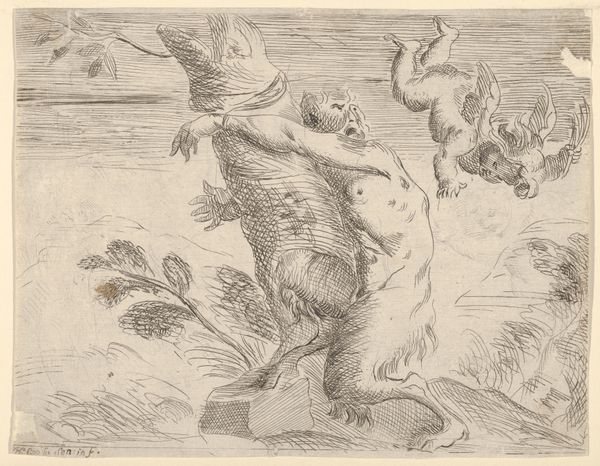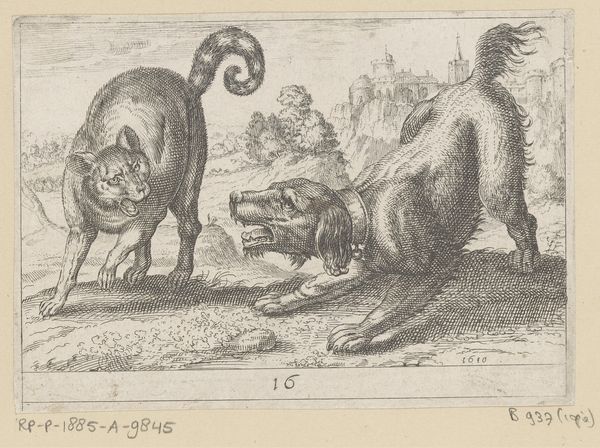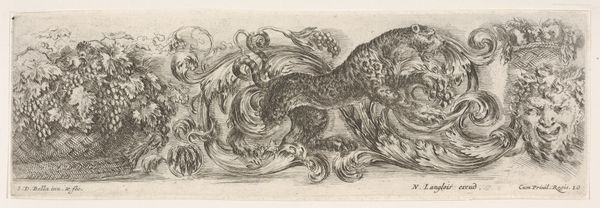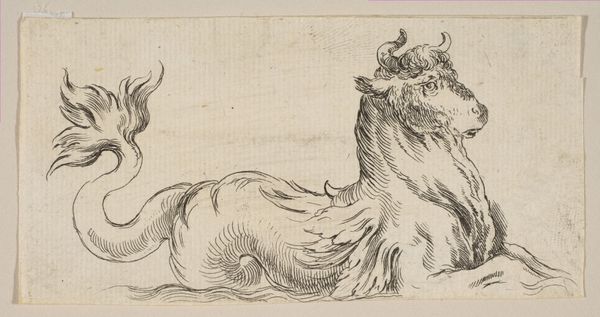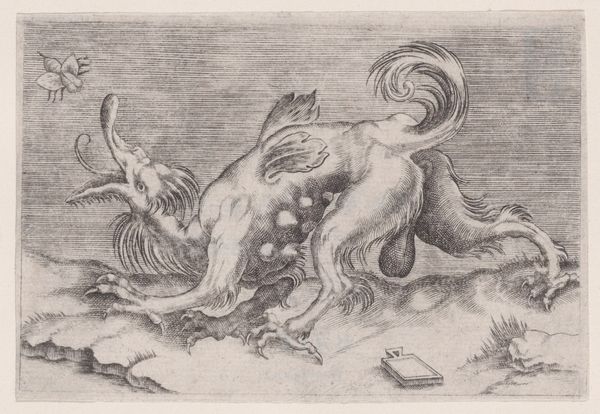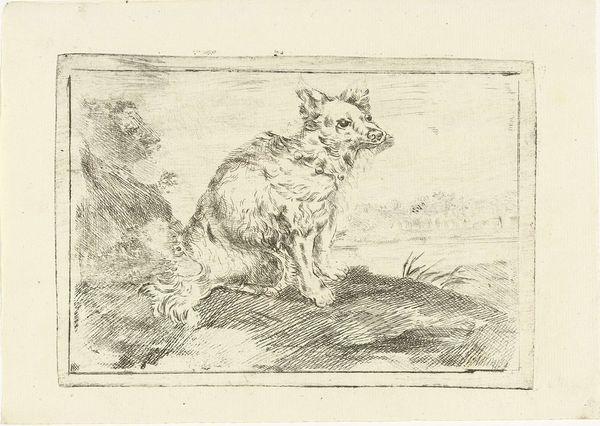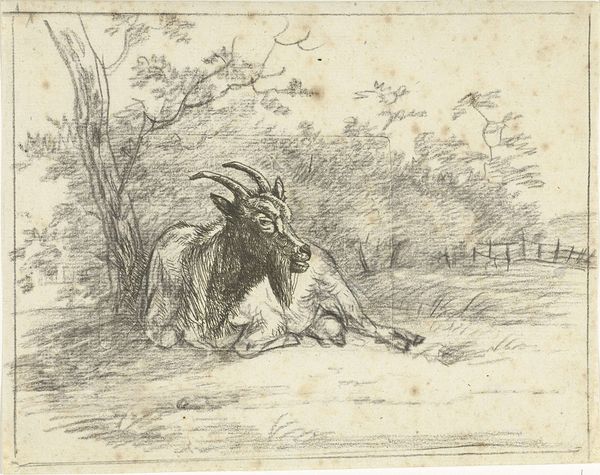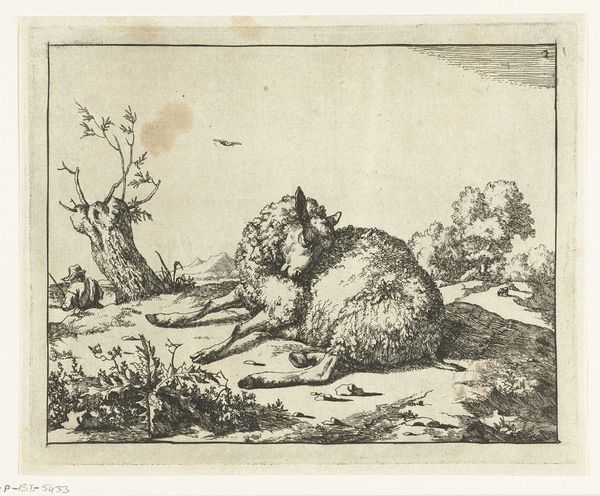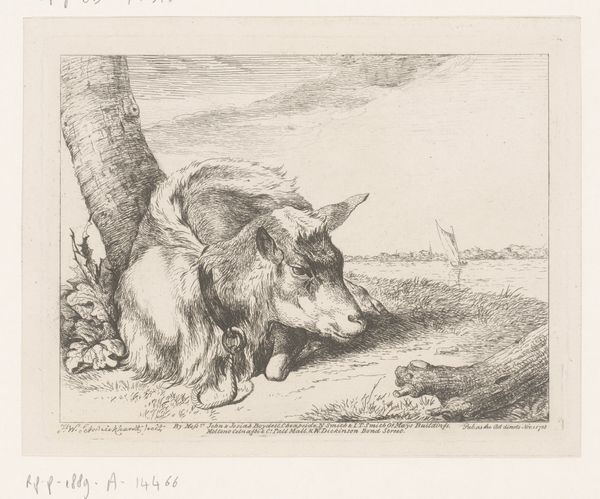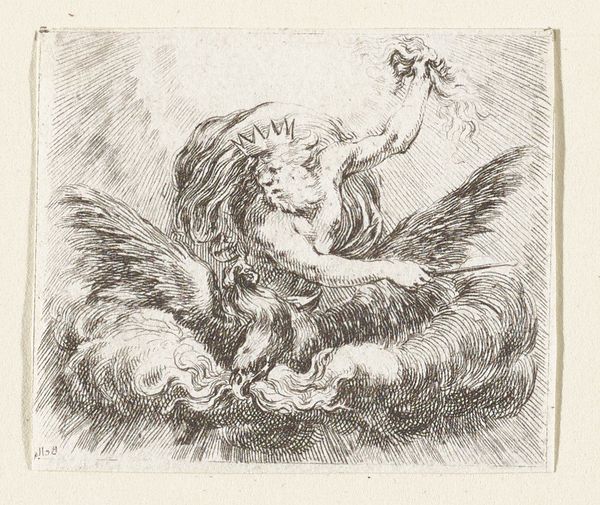
print, etching, engraving
#
animal
# print
#
etching
#
landscape
#
mannerism
#
engraving
Dimensions: height 92 mm, width 137 mm
Copyright: Rijks Museum: Open Domain
Jacques de Fornazeris’s etching presents us with a lynx in repose, set against a landscape dotted with classical ruins. The lynx, with its piercing gaze, carries a rich symbolic weight, traditionally associated with keen sight and the ability to see through deception. The image of the lynx, often associated with vigilance, also recalls the myth of Lynceus, the Argonaut famed for his unmatched vision. But consider how this figure has morphed through time. Once revered for its insightful clarity, the lynx's image has, in some contexts, been twisted to symbolize suspicion or even paranoia. This is the same cultural undercurrent that has brought about shifting interpretations of the watchful eye – a symbol that oscillates between protection and the gaze of an oppressor. The intensity of the lynx's stare invites us to question what lurks beneath the surface, tapping into our own primal fears and desires. This image, therefore, is more than just a depiction of an animal, it is a complex symbol, evolving with humanity's shifting consciousness.
Comments
No comments
Be the first to comment and join the conversation on the ultimate creative platform.
